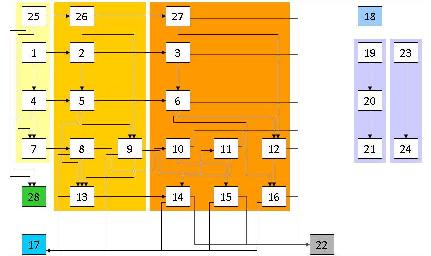


This page describes our work on a model that estimates the expected number of deaths in an anthrax attack by modeling the logistics of the response and the use of prepositioned medical countermeasures, including forward-deployed (local) stockpiles, hospital and workplace caches, and predispensed medications (personal stockpiles and MedKits).
This work was conducted by Michelle L. Houck and Jeffrey W. Herrmann at the University of Maryland, College Park.
The above figure is a schematic of the compartments in the model presented in Houck and Herrmann (2011).
Finding feasible strategies to distribute antibiotics quickly to the general public in response to an anthrax attack remains a difficult challenge. Among the proposed strategies are prepositioned medical countermeasures, including forward-deployed (local) stockpiles, hospital and workplace caches, and predispensed medications (personal stockpiles and MedKits). Prepositioning medications would allow many exposed persons to begin treatment more quickly while reducing the number who visit on points of dispensing, the primary distribution strategy. For more about prepositioning strategies, see the Institute of Medicine report Prepositioning Antibiotics for Anthrax.
This work has developed a model that estimates the expected number of deaths in an anthrax attack by modeling the logistics of the response and the use of prepositioned medical countermeasures. The results show that increasing the number of predispensed medications can reduce the expected number of deaths. When the population has more potential exposures, deploying predispensed medications is more effective. The predispensed medications reduce the number of potential exposures who seek prophylaxis, which allows those truly exposed (but without medication) to receive medication sooner, which saves lives. Beyond the scenarios considered here, the ability to predict this benefit in other scenarios will be valuable to public health officials who are considering which prepositioning strategies are best for their jurisdiction.
See Jeffrey Herrmann's Research page.
This material is copyrighted by the authors. All rights reserved. If you have any questions or would like more information, please contact Jeffrey W. Herrmann at jwh2@umd.edu or 301-405-5433.
Last updated on May 27, 2015, by Jeffrey W. Herrmann.